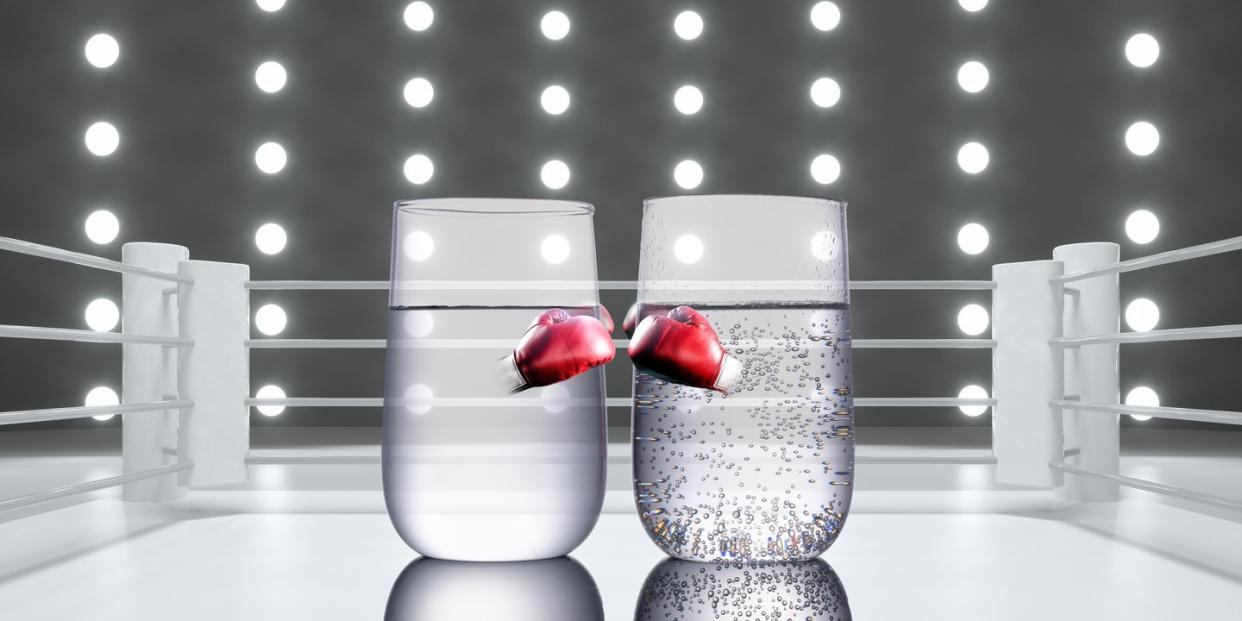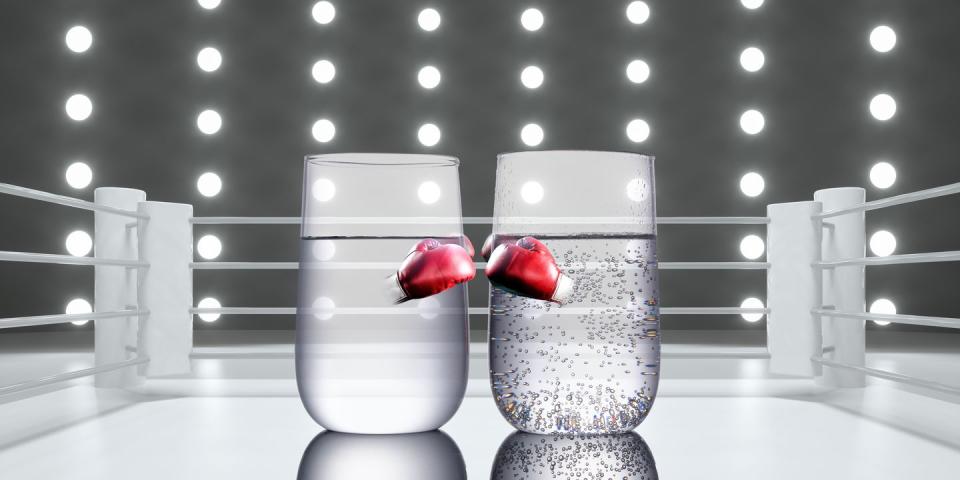It's Time For Restaurants to Stop Asking: Still or Sparkling?


Like it or not, eating at a restaurant is an extended sales transaction garbed in the language of warm hospitality. It is, of course, many other things; can be, at times, a mind body taste fantasia; is frequently fervidly delicious and fervently pleasing. But, at the end of the day, the diner is a customer, the restaurant is the company, the food is the product and the server is the salesman. In pre-shift meetings, there’s talks of upsells, pushing, moving and triggers. (The Carbone guys are famous for their meatball trigger. After every pasta order, waitstaff are ordered to ask, “You wanna do some Mario’s meatballs with that?”) In post-check grumblings, there’s a sense of sticker shock. From the restaurant’s perspective, the end game is to yield the highest possible check average. From the diner’s, the goal is to extract the most value—be it, foodborne escapism, consumption of culinary virtuosity or just a damn good time—for the minimal cost. There’s nothing wrong with such naked jockeying for, as has been amply documented: the restaurant business is a business and an extremely tough one at that.
Out of tact and necessity, however, during the meal this dynamic is downplayed. It is garbed in the language of artistic expression—i.e. “what chef has decided...'' and warm familiarity. There’s nothing duplicitous or underhanded about this. It is a mutually agreed upon dynamic, a diaphanous veil of pretense under which sensual pleasure is transacted. Thankfully, most of the time, this subtle dinner theater is conducted seamlessly and both parties exeunt into the wings sated and faces saved. But, fam, have you ever sat down at a restaurant and the server rolls up and asks you “still or sparkling?” and all of a sudden the boner’s gone and the appetite’s gone and the fiction’s gone and the unseemly transactional nature of the whole edifice is thrown into an unlovely light like teenagers at the end of a middle school dance?
Look, if you happen to be a hydro philistine who prefers bottled water over tap water—environmental cost be damned!—go for it. (The choice is much less objectionable when it comes to sparkling, by the way.) That’s a matter of taste and de gustibus non dispiutandum est. My truck isn’t so much with the options posed but with the options unposed. “Still or sparkling” is a clever rhetorical sleight of hand meant to befuddle, goad and mislead the diner into paying for what should naturally be free. Let’s unpack the question.
“Still or sparkling?” is an example of the logical fallacy termed a false dilemma. It is an example, moreover, of a particularly pernicious type of a false dilemma called a bifurcation fallacy. A bifurcation fallacy presents two options as the only two options. It is also called the excluded middle fallacy or tertium non datur (third not given.) According to Dennis Q. McInerny in his book Being Logical: A Guide to Good Thinking, “the fallacy seeks to create a false sense of urgency in an audience, to force them to choose between the alternatives carefully selected by the perpetrator of the fallacy.” Love it or leave it. With us or against us. Still or sparkling?
The excluded middle here happens to be tap water, which flows freely from every tap in every restaurant across the country. I live in New York City, where the cost of living is high but we all lump it because our water comes from three distant aquifers—the Delaware, Croton and Catsklill—flows to us by gravity, tastes like 7.2 pH nectar and is generally considered the “champagne of water.” New York City tap water is what makes our bagels and pizza nonpareil, our teeth strong and $5,000 average rents worth it. I have a deep distrust of those who forswear New York City tap water. It seems to be a piece to Grubhub’s unforgivable “Cooking is So New Jersey” ad campaign from a few years ago, a sort of malodorous regional snobbery borne of false assumption. (Even if cooking is somehow so New Jersey—pettifogging poppycock to begin with—then fuck yeah, New Jersey is awesome too.) Which is all to say, that I have drunk the Kool Aid on drinking New York City tap water and will choose it, not only on the basis of taste but on the basis of principle, when given the chance every single time. So give me the chance.
Perhaps even more saliently than the water itself is how this deceptively simple question functions in the meal. It is a wanton reminder of the essential transactional nature of a restaurant. When one is both a tap water acolyte, such as I am, and allergic to being hoodwinked, such as we all are, still or sparkling rankles. It forces one into the role of miser, with an acrid aftertaste of the ill-used and casts a pall of nickle-and-diming over the dining.
Lately I’ve been enheartened by the number of restaurants that offer their own filtered tap and sparkling water for free. (Claud in New York; Il Buco Vita in Amanganset; Freya in Detroit, to name a few.) Confoundingly even in those cases and almost by reflex, servers still often present the false choice of still or sparkling when just as easily, and move endearingly, offer filtered tap, filtered sparkling or bottled water. The solution happens to be found in a glass of cold water itself: crystal clarity. Just offer the tap water. It rolls off the tongue, pure and refreshing: “Still, sparkling or tap?”
You Might Also Like

